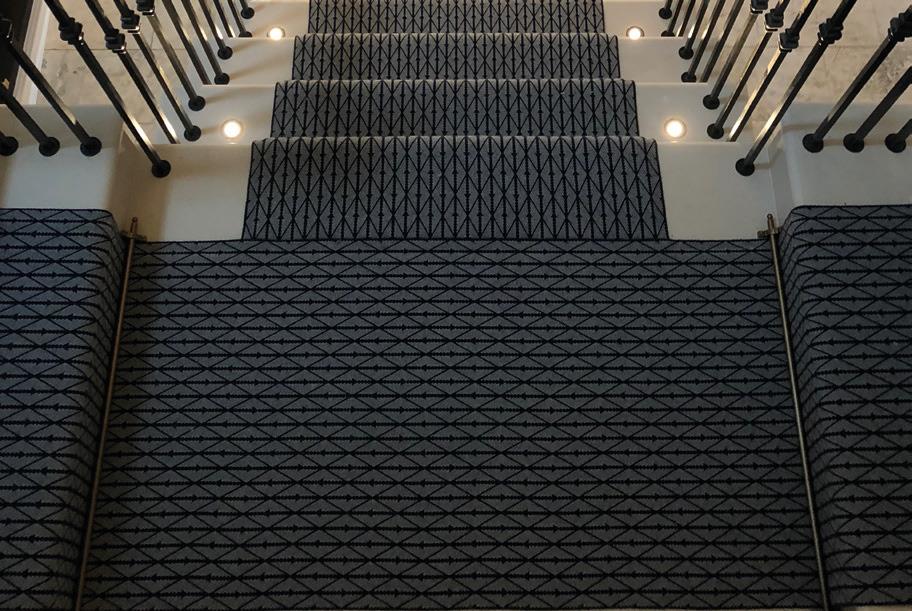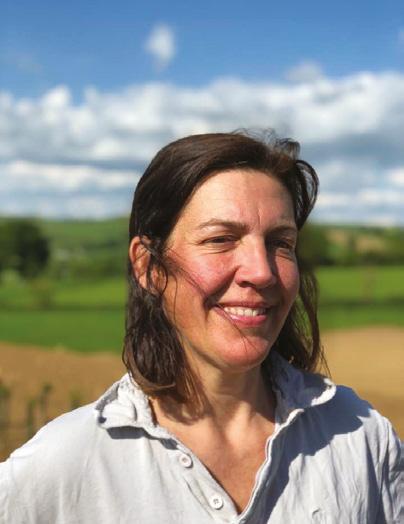
3 minute read
WALKING FOR JOY
Peter Littlewood, Director, Young People’s Trust for the Environment
Yes, I know. The well-known phrase should be ‘jumping’ for joy, but I tore my Achilles tendon during the October half-term. As a result of my injury, jumping, running, or even walking have been beyond me for about eight weeks. Tomorrow, I’m due to get out of the ‘boot’ I’ve been wearing for the last eight weeks. It’s been a miracle worker that has allowed me some degree of mobility while my surgically rejoined tendon has been healing. But now that the end is in sight, I’m looking forward to simple pleasures like wearing ordinary shoes!
Advertisement
More than that though, I’m looking forward to being able to go on walks again. I’m done with crosscountry running - I think I need to accept that I’m too old and to carry on risks further damage to my ageing frame. But getting out into the countryside, breathing the fresh air, feeling at one with nature - that’s what I’m looking forward to now.
So where to first? Well, the five-kilometre loop that travels from Bradford Abbas to Thornford and back seems like the obvious place to start. The loop begins very close to home and provides some fantastic views over the beautiful countryside we’re lucky enough to live in. Later in the year, I look forward to hearing the mewing cry of the buzzards and the warbling of the skylarks as a sonic backdrop to the walk.
But I look forward to being able to travel further afield too and once I’m fully recovered, I’d love another trip to my favourite part of Dorset – The Isle of Purbeck. There are just so many fantastic places in this small corner of our country and it’s so worth an explore. Take Studland beach, with its three miles of golden sand, its dunes and its heath, which is one of the few areas of the British Isles where all six of our native reptiles can be found. Or the geological drama of Lulworth Cove and Durdle Door, which serve not only as a magnet for tourists, but also as a live lesson for geography students.
If, like me, you prefer to get away from the crowds, you could opt to walk along the chalk ridge of Nine
Barrow Down, which runs between Swanage and Corfe Castle. This part of the Purbeck Hills gets its name from the nine Bronze Age burial mounds that lie along the ridge as monuments to people long since gone, but not entirely forgotten. If you don’t want to walk back afterwards, you can always take the steam train!
Corfe Castle itself has over 900 years of history. Edward, King of Wessex, (also known as Edward the Martyr) was murdered there in 978AD, before the castle even existed. During the Civil War, Dame Mary Bankes bravely defended her home against attacking Parliamentarian armies.
Once it was captured, which was only possible thanks to a traitor in Dame Mary’s ranks, Parliament deemed it too dangerous a fortress to be allowed to remain and possibly fall back into the hands of the King. So the order was passed for the destruction of the castle and the result is the romantic ruin that we see today.
Or you could head down to the sea from Worth Matravers and you’ll find the abandoned quarry caves at Winspit, which were used as locations for several science fiction series, including Doctor Who, Blake’s Seven and most recently Andor. It’s a mysterious place –a memorial to the quarrymen who carved the limestone from the cliffs and craned it down to boats that waited below the cliffs, but also the haunt of smugglers.
On days when the Lulworth Range Walks are open, a visit to the ‘lost village’ of Tyneham is well worth it. Tyneham was requisitioned by the army in December 1943 and the villagers were never allowed to return, even after the war had ended. Their houses still stand, in various states of disrepair and there are displays in the restored school and church. It has an atmosphere all of its own, whilst the spectacular Worbarrow Bay is only about a mile’s walk away. Above Worbarrow Bay, there’s Flower’s Barrow, the remains of an Iron Age hillfort. The area around Flower’s Barrow is said to be haunted by a ghostly Roman army. The ghosts were first sighted in 1678 by a local squire, his brother and four workmen. Whilst I’ve never seen the ghosts, you can easily pick out the remains of the ramparts, although a lot of the fort has long since disappeared due to cliff falls. There’s just so much to see, if not quite on our doorstep, then certainly close by. Whilst I don’t think I’ll be doing any more running, I’m looking forward to getting back to walking in our wonderful county again. I hope I’ve given you a bit of inspiration too. ypte.org.uk









